Arriving on Kazakh soil provided one of those wonderful moments which happen from time to time where I stop, take a look at the faces, buildings, and landscape around me, and take a few seconds to appreciate where I am. Often on a long distance cycle tour the unerring progression, time spent away from home, and ongoing new experiences lull one into a state where it becomes easy to forget the bizarre fortune of your situation.
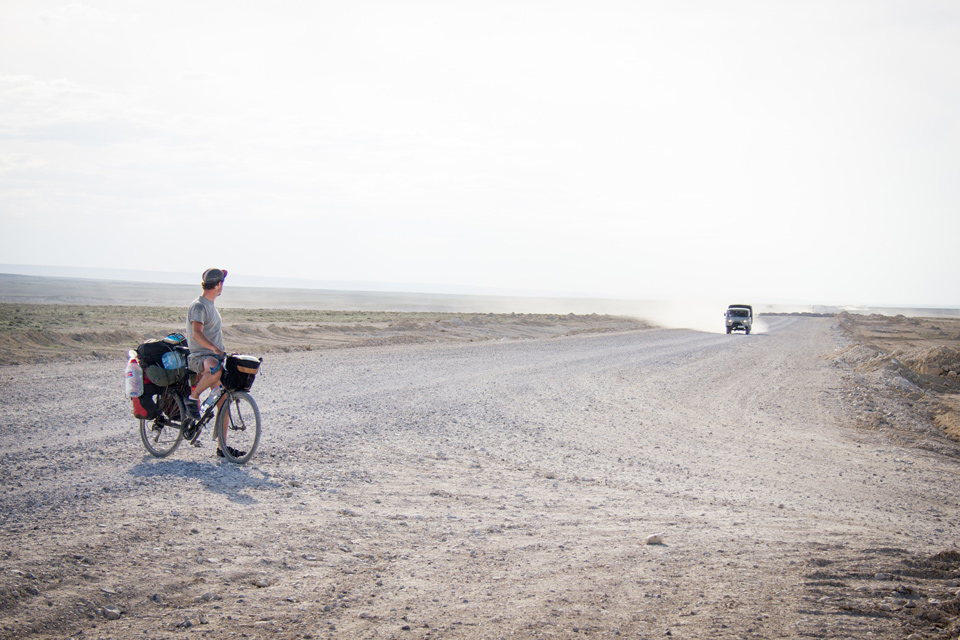
I found myself on the dusty brown shores of the Caspian sea, the sun bright in a mid-morning sky and the temperature rising with it. Behind me bobbed the Shadag, the freight ship I had just alighted after a 45 hour crossing from Azerbaijan, and in front of me were lined a team of stern faced military personnel demanding to see my passport. I felt a surge of excitement run through my veins as I stood there being eyed up by customs, peering over their shoulders at the vast expanses of nothing beyond eagerly waiting for my entrance to Central Asia, and more promptly the deserts of Kazakhstan, to be granted…
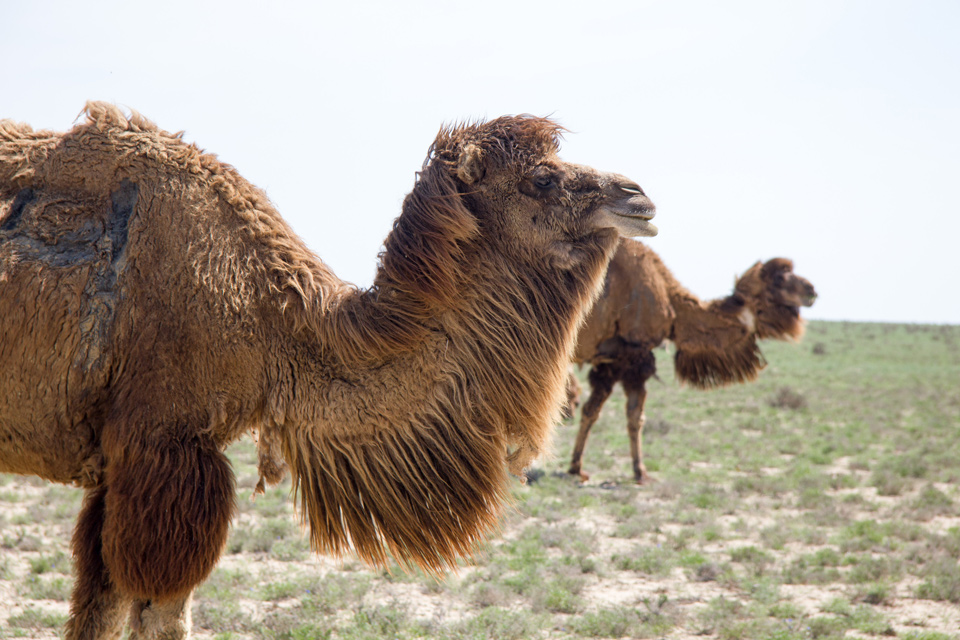
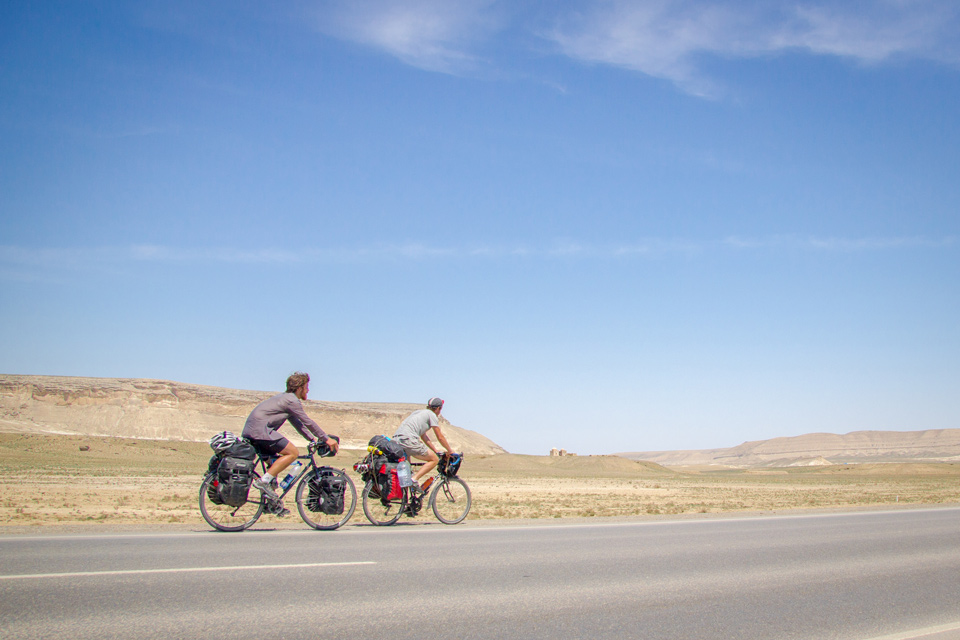
"So flat and featureless was the landscape that making a judgement over the road ahead became impossible. Appearing as a speck on the horizon, the sighting of a chaihana sent a wave of excitement through us, prompting a nod of mutual understanding"
Rob and I had made the crossing with Kirsty and Marcus, a Bristolian couple that are following a similar route to ours, and as we wobbled our way into Aktau, the port town, it was pretty apparent that Marcus was yet to shake the hangover from the homemade Georgian brew given to us by train drivers on the boat the night before. We left him with his head between his knees as we looked for the conspicuously located building where we needed to register ourselves with the police, only to find that the building had been abolished a few years ago. Central Asian bureaucracy lesson one: just accept the circles that you will be made to run in.
Kirsty and Marcus _ rode off into the desert that afternoon, but Rob and I hung around because we had planned to give a talk at a school in _Aktau. However, the school was closed for a few days so one of the teachers kindly put us up for the night before waving us goodbye in the morning. As Aktau regressed into a faint sequence of silhouettes, faded by the dust and heat waves between us, the desert-steppe revealed itself imposingly on the opposite horizon. But for a few nodding jack-pumps, greedily sucking Kazakhstan’s economy-propping oil reserves from below us, the features of the landscape were precious few. For the first couple of days as we made our way inland there were curious rock formations to marvel at, and occasionally a waterhole would shimmer into view with its accompanying entourage of wildlife: horses; camels; and even flamingos. However, once we were 200km from Aktau, the roadside entertainment dropped off into a cataclysmic void of nothing. So flat and featureless was
the landscape that making a judgement over the road ahead became impossible; with nothing to go by, we didn’t know whether the horizon lay thirty kilometres away or three. Only the railway line, which for the latter half of our desert crossing lay just 200m parallel to the road, provided a sliver of scale – which wasn’t necessarily a good thing, as we slowly pedalled along.
It was May by this point, and despite being on the receiving end of some temperatures above thirty degrees, we were fortunately crossing these plains well before summer, where temperatures of up to fifty are not uncommon. Nonetheless, water was still of paramount importance, and between us Rob and I were carrying 15 litres when fully stocked, and between eating, drinking, and washing (our hands, at least), we needed it. We also continued our ever-strengthening bond with tea houses, which are known throughout Central Asia as a ‘chaihana’, or some other similarly spelt iteration. Appearing as a speck of dark on the horizon between every 60 to 100km, the sighting of a chaihana sent a wave of very real excitement through us, prompting a nod of mutual understanding between us, as we readied ourselves for the ensuing steaming glass of chai and whatever culinary delights the proprietor-cum-landlord-cum-chef-cum-you-name-it had on offer. Manti (ravioli without the sauce) and Lagman (noodle soup without the flavour) would become regular staples in our diets, and maintain their state of infamy among cycle tourists in this part of the world. Our bowels, unfortunately, took a little longer to adjust…
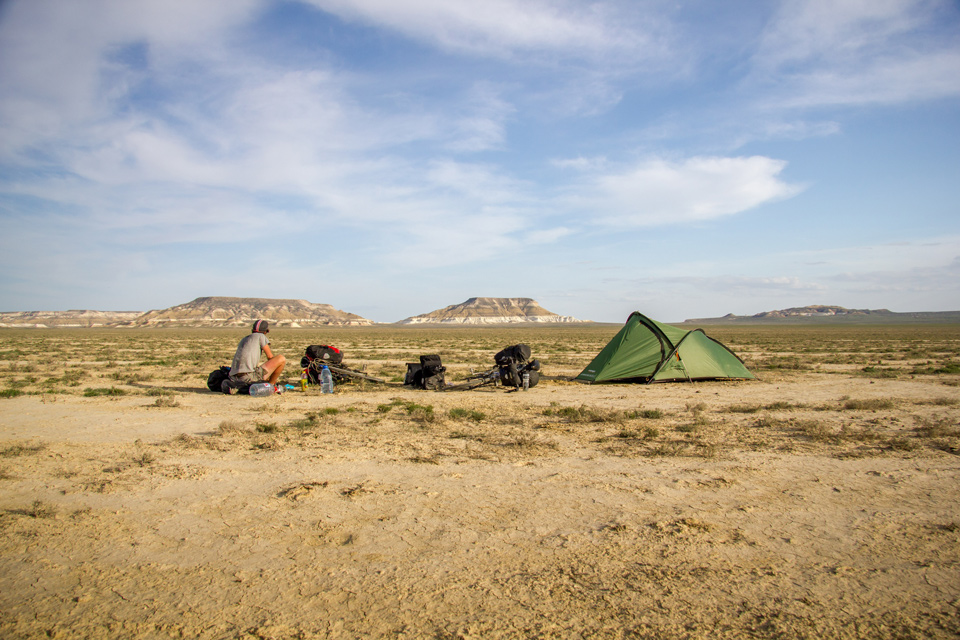
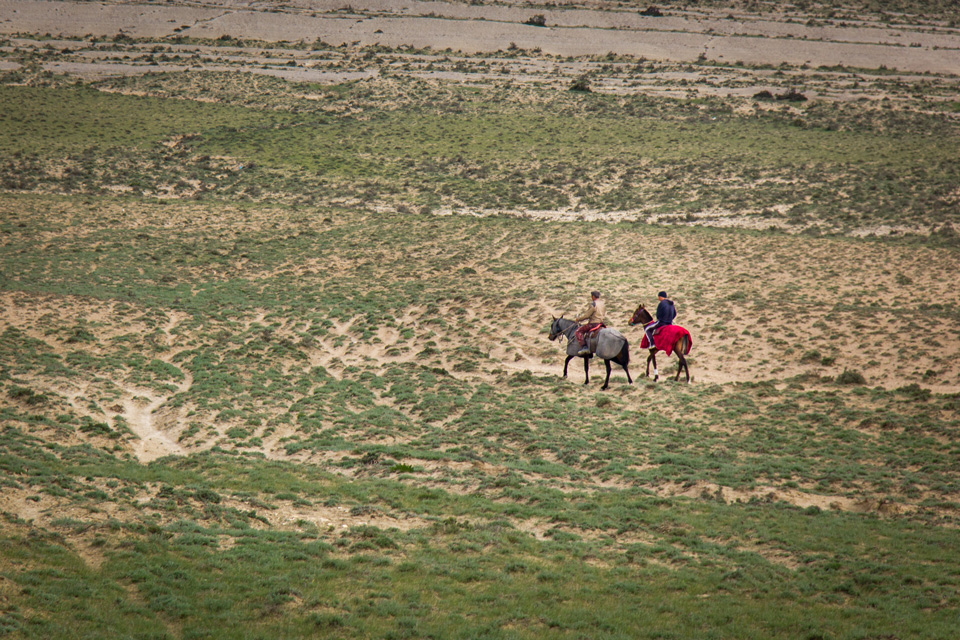
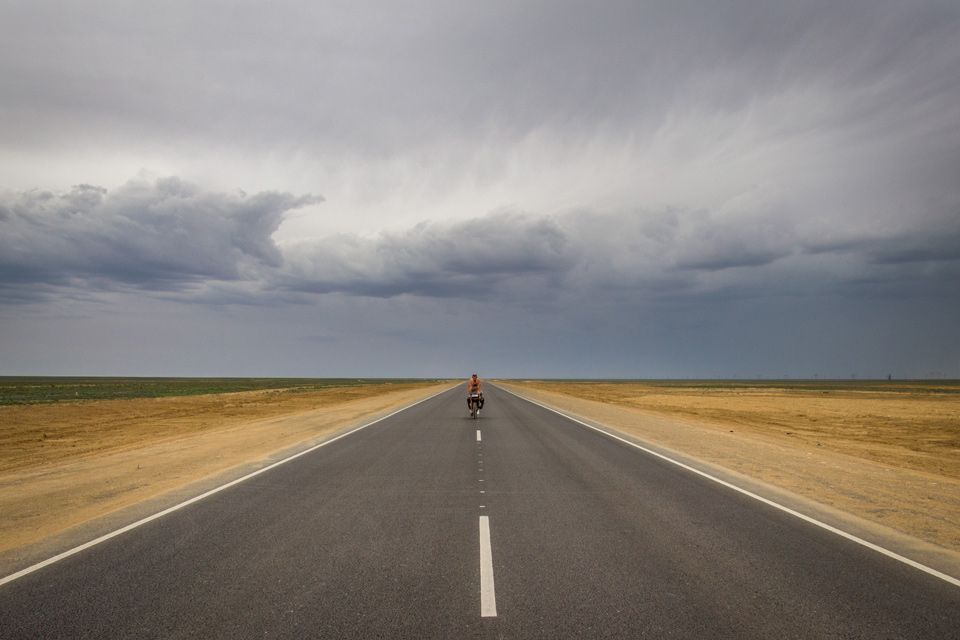
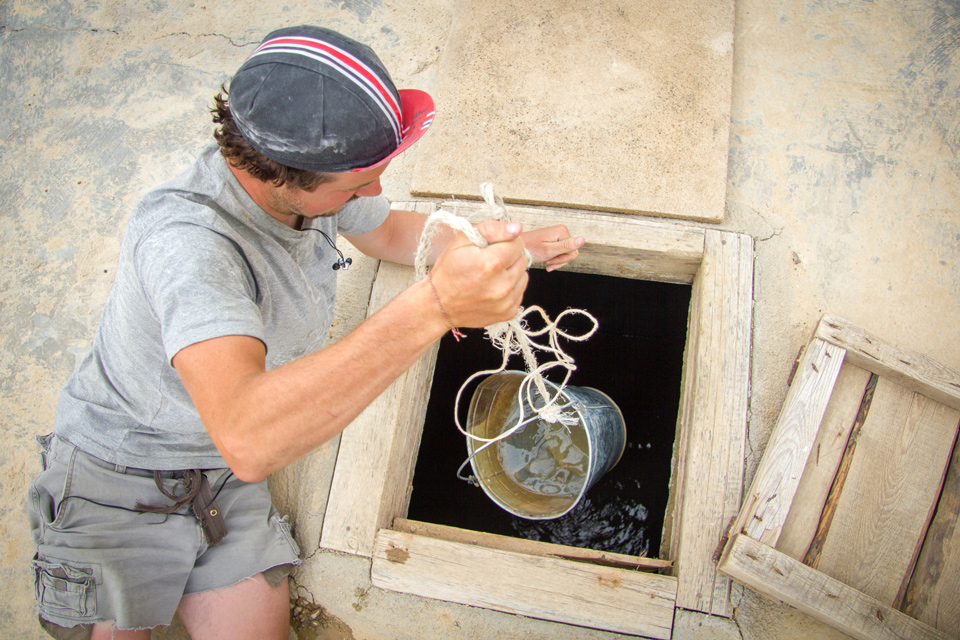
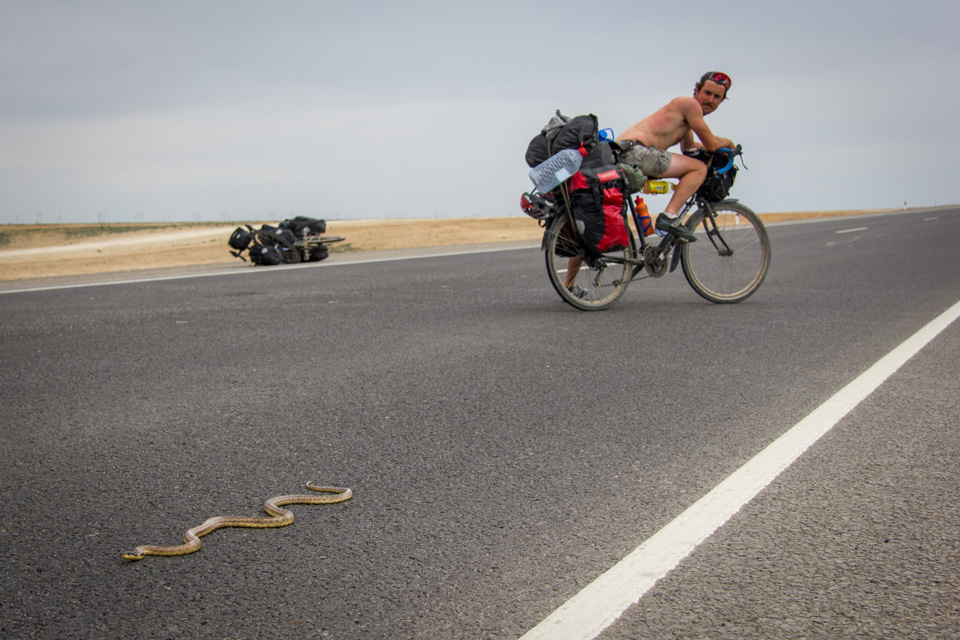
After 500km came the town of Beyneu – marking the point where the road either goes north into the deeper realms of Kazakhstan’s stepped interior, or south to the Uzbek border and the Kyzyl Kum desert beyond. The road dramatically deteriorated into a web of muddied tracks, formed by the truckers trying to find the smoothest line, but which were now dried into the stuff of freewheeling nightmares. On the plus side, the constant concentration that navigating these roads necessitated at least made for a less boring ride, as after over a week in the desert-steppe now, the novelty of nothing to look at had very much worn off.
Uzbek customs were as scrupulous as we had heard: a complete overhaul of our bikes and gear performed in front of many a curious onlooker, as we filled in many a declaration of this, that and the other. The quite ridiculous Uzbek exchange rate meant that after trading a few dollars with the black market operatives beyond the border gates, we were stuffing thousands upon thousands of Uzbek Som into our pockets like it was monopoly money. At a chaihana just beyond the border we bumped into the familiar faces of Kirsty and Marcus, but with our routes due to cross again – it wouldn’t be the last. With the added stimulus of our Tajik visas nearing validity, and therefore also our time span in which to enjoy the Pamirs, we again parted ways – Rob and I dashed on south.
Uzbekistan’s wastes were a lot more desert-y than the Kazakh ones, with sandy dunes occupying a lot of the roadside, or if not then the cracked muddy jigsaw of long-parched bodies of water. An excursion up to Moynaq, on the former shores of the Aral Sea, allowed for a sad realisation of just how much Soviet-imposed irrigation systems for a cotton-growing industry had robbed this part of the country. A ‘ship graveyard’ lay forsaken at the bottom of Moynaq’s cliffs; its abandoned cafe’s, fish markets, and inhabitants, limping on through life at the top, with the Aral now almost 300km away.
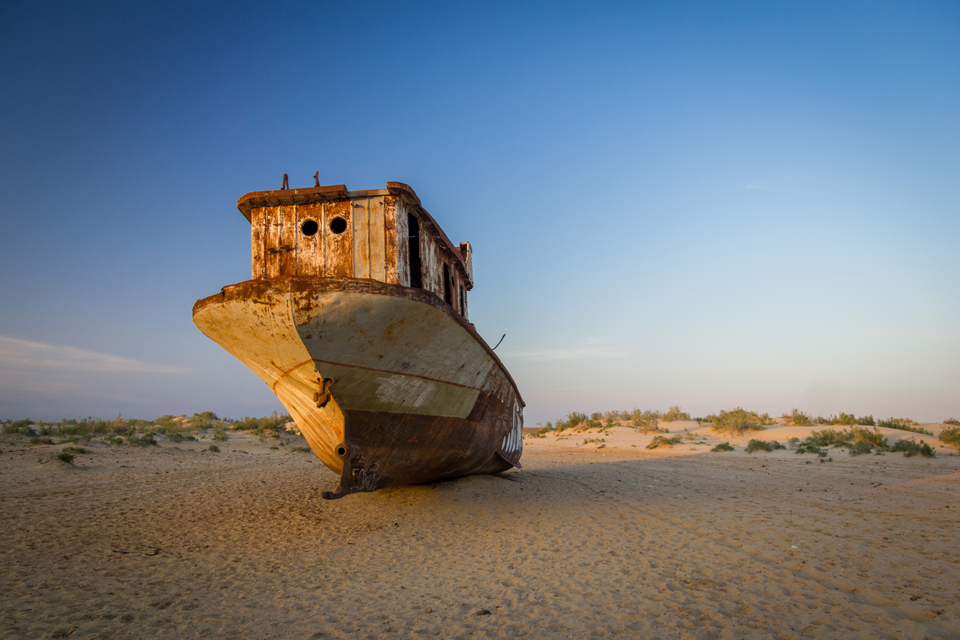
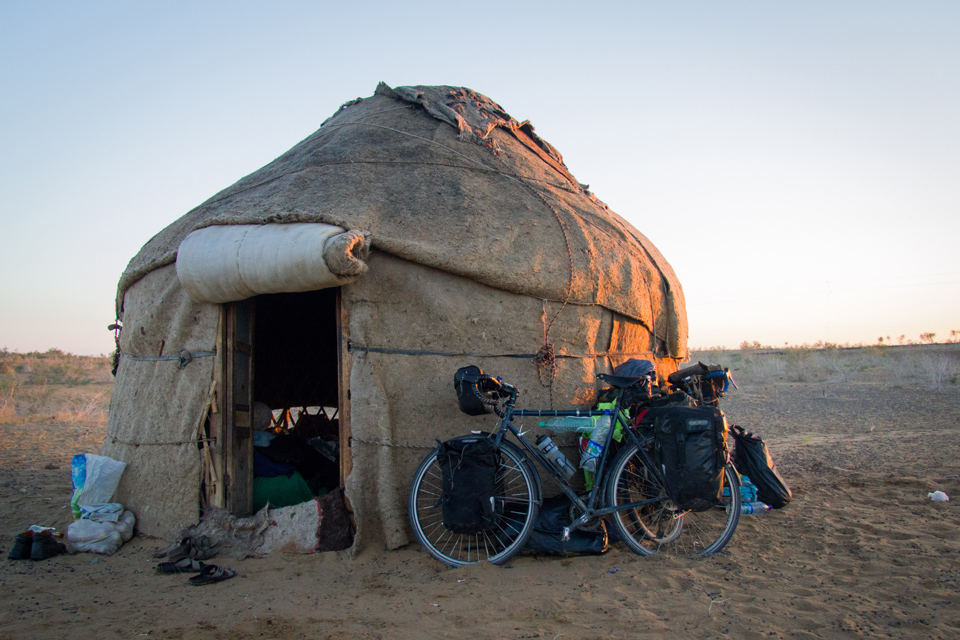
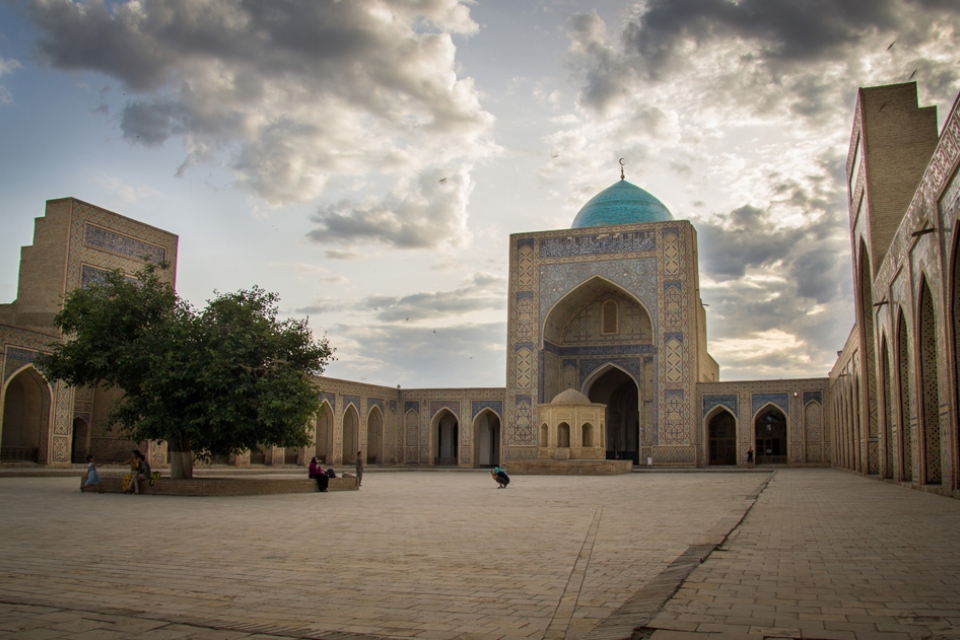
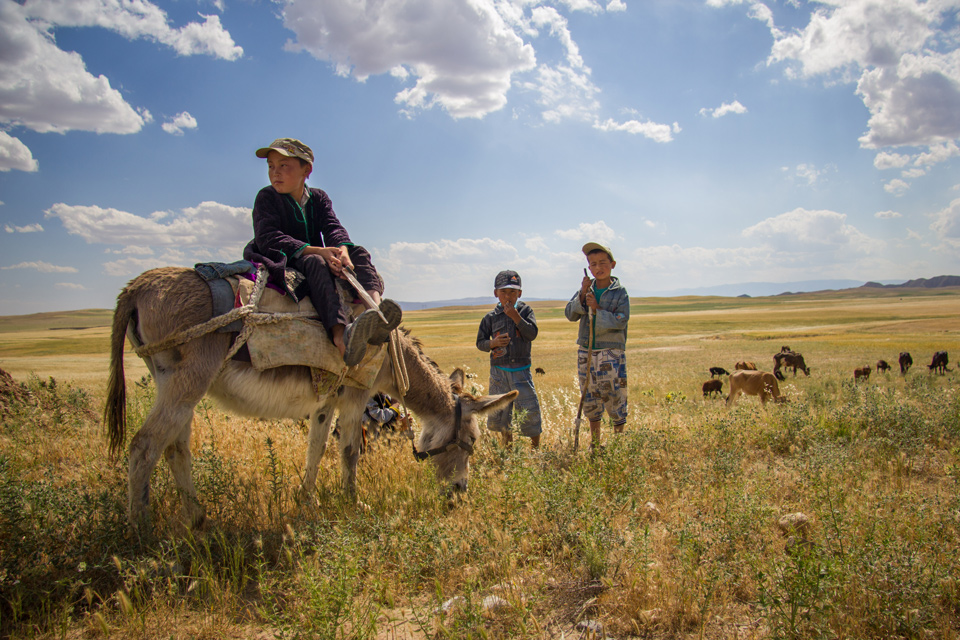
Between the swathes of uninhabitable desert were the oases settlements of life, culture, and very ancient history, where people have settled throughout the ages – famed cities like Khiva, Bukhara, and of course Samarkand. As well as marvelling at the quite spectacular architecture that the khanates of old built for their kingdoms, we came to appreciate their natural importance as stations of much needed reprieve too; chances to fix bikes, equipment, and ourselves, before the next battering that each would be sure to get as we departed across the next stretch.
Tajikistan, and the mighty Pamir, were now firmly in our midst, but one final memory from the lowlands of Central Asia was granted to us by the shepherd inhabitants of one yurt camp, nestled between some rushes and dunes in the middle of the desert somewhere. After a long 190km day, the sun had set and the temperature had dropped. Hungry, dirty, and tired of both cycling and the desert, we were beckoned to spend the night in one of the yurts occupied by family members across three generations. After cooking some pasta on our stoves, and talking in broken but improving Russian to the circle of fire-lit faces around us, eventually it was time for bed. Curled up under a mass of duvets, surrounded by strangers, but cosy under the hide roof above my head, and incredulous at the night sky visible through the open door, I felt a strong pang of life. It was another one of those moments...